Basil isn’t just a kitchen staple — it’s also a gorgeous addition to any garden or indoor plant collection. With its aromatic leaves, colorful varieties, and charming flowers, basil can effortlessly serve both culinary and decorative purposes. Whether you’re spicing up pasta sauces, garnishing cocktails, or adding pops of color to borders and pots, there’s a basil plant for every need. From classic sweet basil to striking purple varieties, let’s explore 10 basil plants perfect for both cooking and ornamental beauty.

1. Sweet Basil (Ocimum basilicum)
The most famous variety of all, Sweet Basil is a must-have for any kitchen garden. Its broad, glossy green leaves have a sweet, slightly peppery flavor that pairs perfectly with tomatoes, pasta, and pesto recipes. This fast-growing plant loves full sun and moist, well-draining soil. While it’s best known for culinary use, its lush foliage also looks beautiful in garden beds or decorative pots. Regular pruning encourages bushier growth and helps prevent early flowering for a longer harvest season.
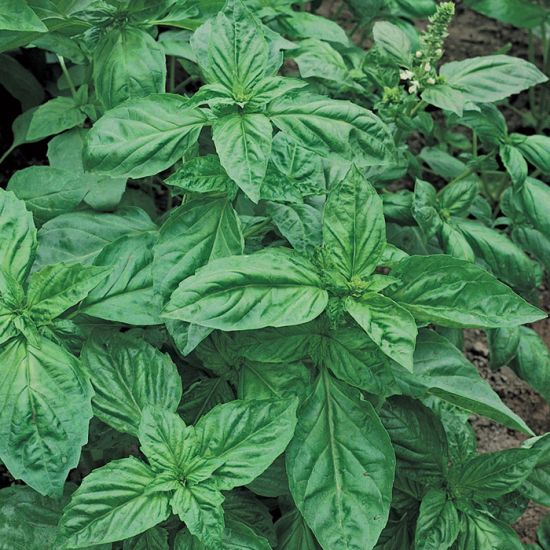
2. Genovese Basil
Highly prized in Italian cuisine, Genovese Basil features larger, darker green leaves and an intensely aromatic flavor, making it ideal for pesto, caprese salads, and herb-infused oils. It has a compact, bushy growth habit, which also makes it an attractive ornamental plant. Genovese Basil thrives in full sun and requires frequent harvesting to stay full and prevent bolting. It’s perfect for container gardens, sunny kitchen windowsills, or mixed herb beds where both beauty and function matter.
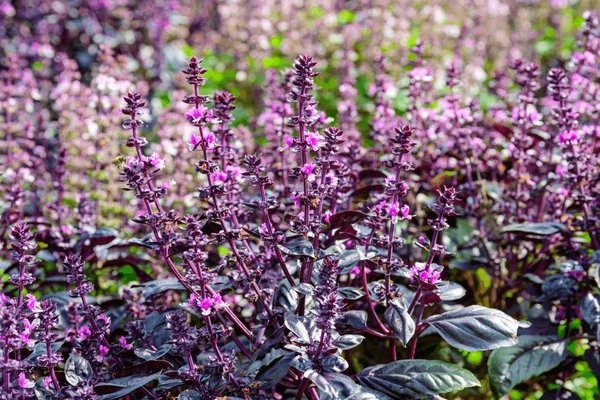
3. Purple Basil (Ocimum basilicum ‘Purpurascens’)
For a dramatic pop of color, Purple Basil is a striking choice. Its deep purple leaves and light pink flowers make it a showstopper in both edible and ornamental gardens. The flavor is slightly spicier and clove-like compared to Sweet Basil, making it excellent for vinaigrettes, teas, and colorful garnishes. Purple Basil thrives in sunny spots and benefits from regular watering. It pairs beautifully with green-leafed herbs in mixed planters or as a border plant in ornamental beds.
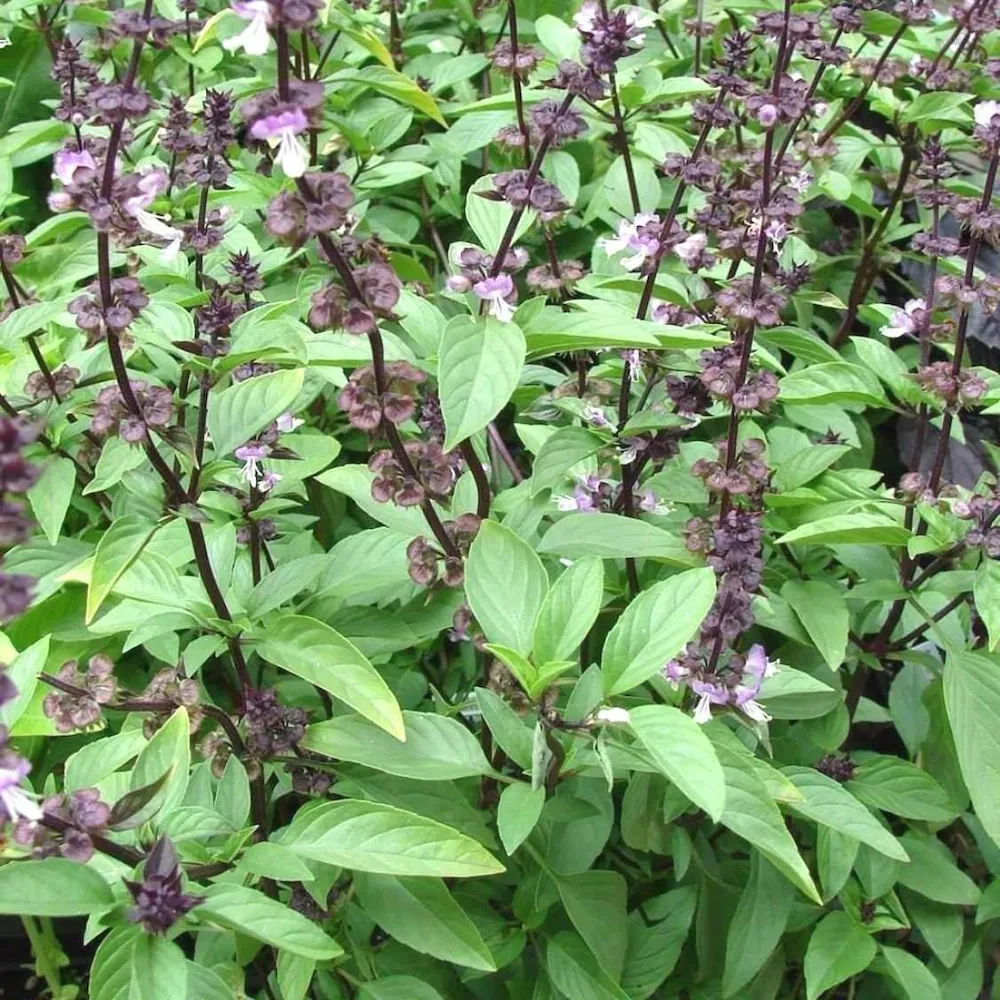
4. Thai Basil (Ocimum basilicum var. thyrsiflora)
Famous in Southeast Asian dishes, Thai Basil offers an anise-like flavor with a hint of spice. Its glossy green leaves and purple stems, topped with lavender flower spikes, make it equally attractive as a garden ornamental. It performs best in warm, sunny conditions and prefers consistently moist, fertile soil. Besides adding flavor to curries, soups, and stir-fries, Thai Basil brings exotic flair to herb gardens and container arrangements, making it both practical and beautiful.

5. Lemon Basil (Ocimum × citriodorum)
As its name suggests, Lemon Basil boasts a delightful citrusy aroma and flavor, perfect for seafood dishes, teas, and light summer salads. Its narrow, pale green leaves and small white flowers add a delicate texture to herb gardens and ornamental plantings. It thrives in full sun with regular watering and benefits from frequent harvesting to encourage leafy growth. Lemon Basil’s refreshing scent and elegant appearance make it ideal for mixed borders and kitchen herb gardens.
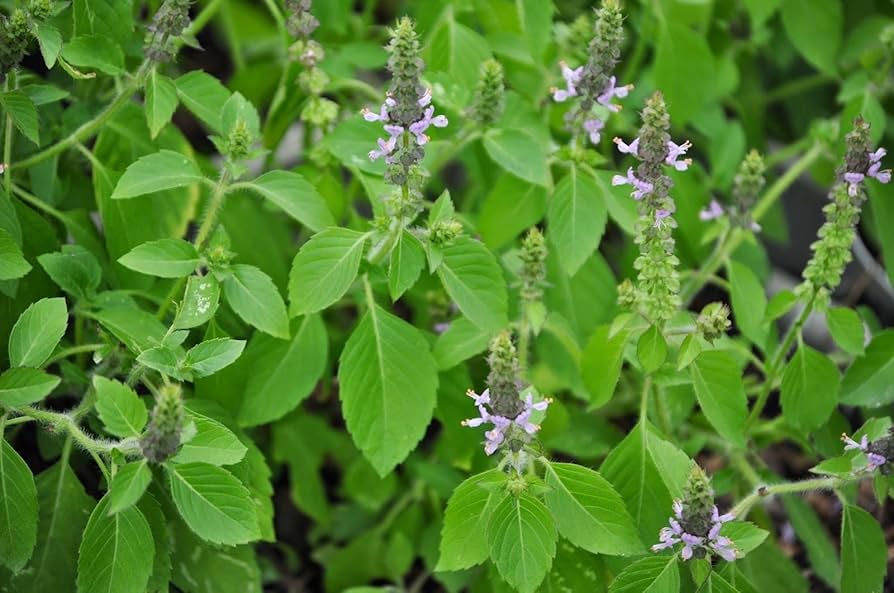
6. Holy Basil (Ocimum tenuiflorum or Ocimum sanctum)
Also known as Tulsi, Holy Basil is revered in Ayurvedic medicine and grown for its health benefits and spiritual significance. Its slightly fuzzy, aromatic leaves have a peppery, clove-like taste, often used in herbal teas and traditional dishes. The plant produces tiny, fragrant purple flowers and adds a mystical touch to gardens and patios. It prefers warm weather, full sun, and well-draining soil. Holy Basil is both a culinary and ornamental plant, valued for its fragrance and cultural symbolism.
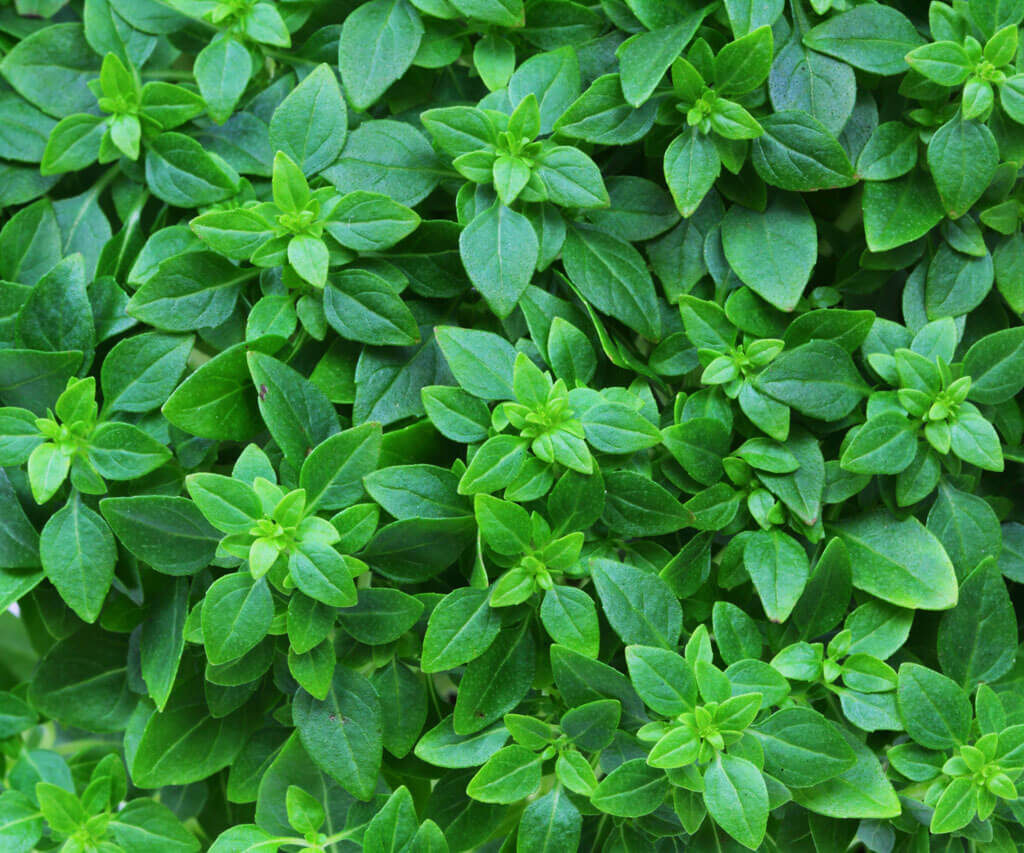
7. Greek Basil (Ocimum basilicum var. minimum)
Greek Basil is a compact, bushy variety with tiny, aromatic leaves. Despite its small size, it packs a punch in both flavor and appearance. It’s perfect for seasoning meats, sauces, and Mediterranean dishes. The plant forms neat, rounded mounds, making it a favorite for decorative pots, borders, or herb spirals. It thrives in full sun and well-drained soil. Greek Basil’s dense foliage and charming white flowers also attract pollinators, adding life and beauty to your outdoor spaces.
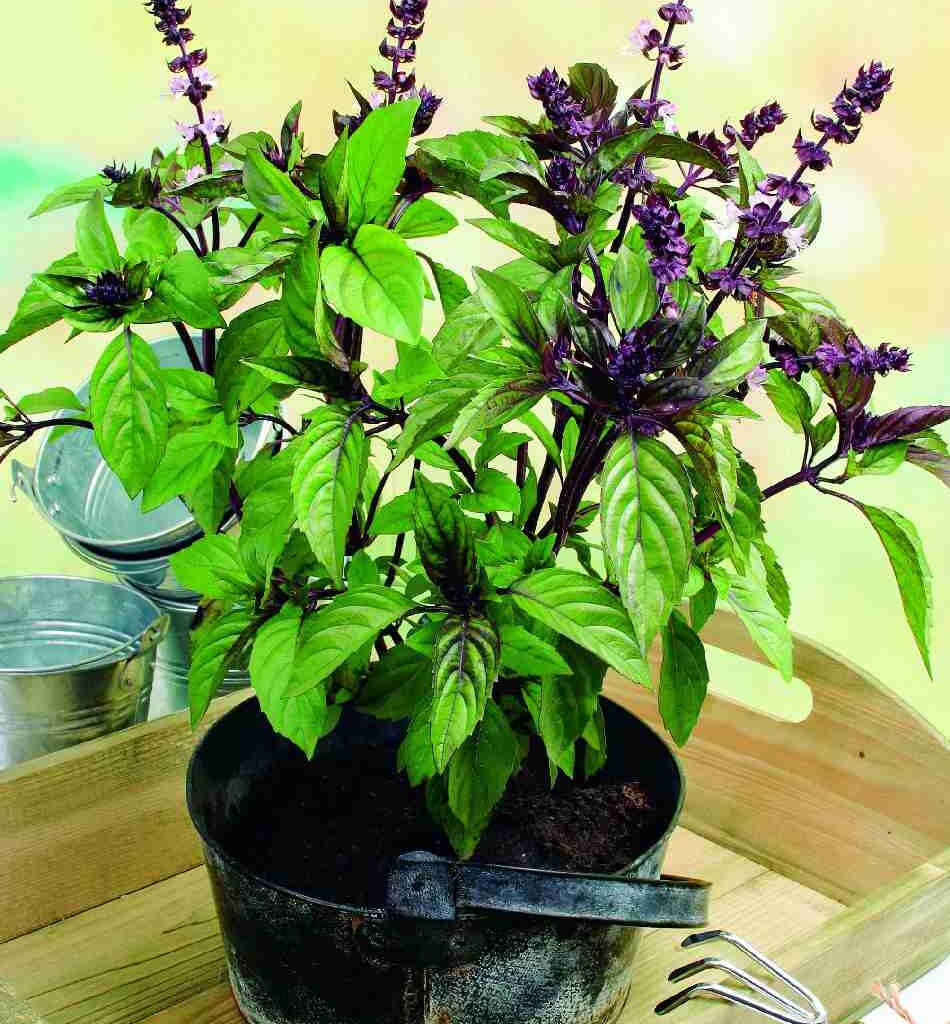
8. Cinnamon Basil (Ocimum basilicum ‘Cinnamon’)
Cinnamon Basil stands out with its spicy, sweet aroma and subtle cinnamon flavor, ideal for herbal teas, fruit salads, and desserts. Its glossy green leaves, tinged with purple veins and stems, produce striking pinkish flower spikes. This variety thrives in sunny spots with moist, fertile soil and benefits from regular harvesting to maintain bushy growth. Cinnamon Basil not only adds culinary versatility but also serves as a fragrant and decorative addition to flower beds and patio containers.
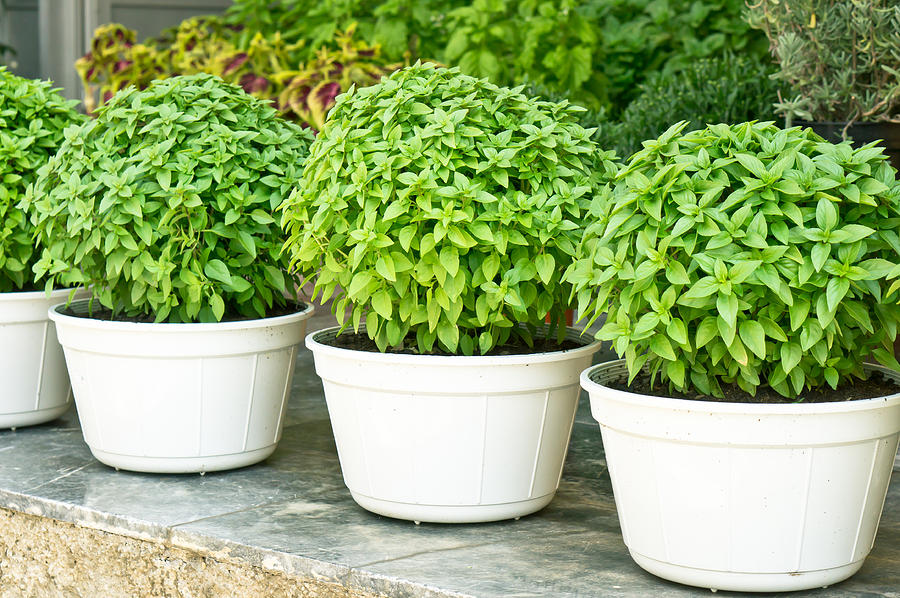
9. Spicy Globe Basil (Ocimum basilicum ‘Spicy Globe’)
True to its name, Spicy Globe Basil forms tidy, globe-shaped mounds with tiny, intensely flavorful leaves. The plant’s compact size, about 12 inches tall, makes it perfect for small spaces, windowsills, and border edges. It offers a bold, peppery flavor ideal for seasoning dishes, fresh salads, and garnishes. It grows well in full sun and appreciates regular trimming. Its neat form and aromatic presence make it a charming, low-maintenance addition to both culinary and ornamental plant collections.

10. African Blue Basil (Ocimum kilimandscharicum × basilicum ‘Dark Opal’)
A perennial hybrid, African Blue Basil is grown primarily as an ornamental, thanks to its attractive purple-tinged leaves, tall growth habit, and violet flower spikes. While its flavor is stronger and slightly camphor-like, it can still be used in cooked dishes and herbal teas. This variety is highly aromatic and excellent for attracting bees and pollinators to your garden. It thrives in full sun and well-drained soil and serves as a bold, architectural plant for flower borders, herb gardens, and decorative pots.
Final Thoughts
Basil plants offer much more than kitchen flavor — their varied colors, textures, and scents make them equally valuable as ornamental features in home gardens and interiors. From the classic Sweet Basil to the boldly decorative African Blue Basil, there’s a variety for every purpose and preference. With a little sunshine, water, and care, these versatile plants will reward you with both culinary delights and visual appeal throughout the growing season.
Would you like a care and harvesting guide for these basil varieties too? I’d be happy to put one together!

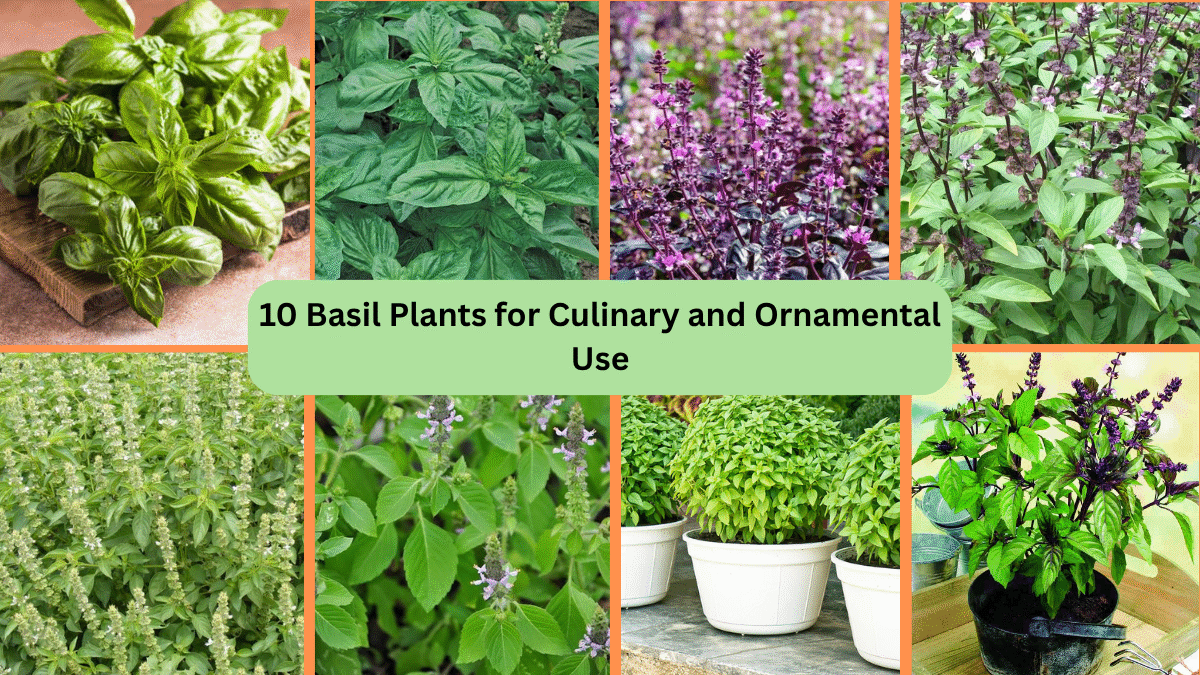



Leave A Comment